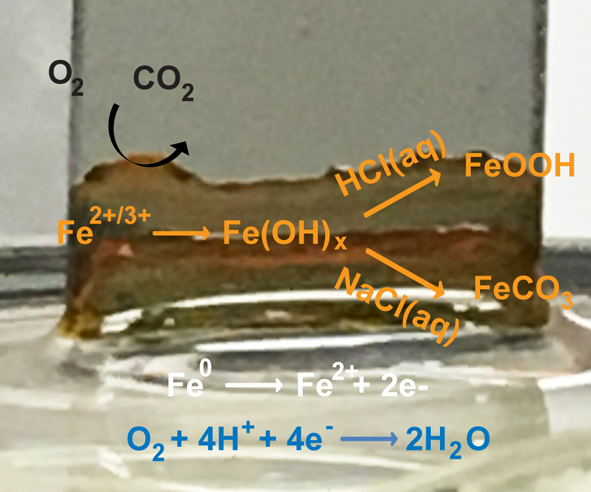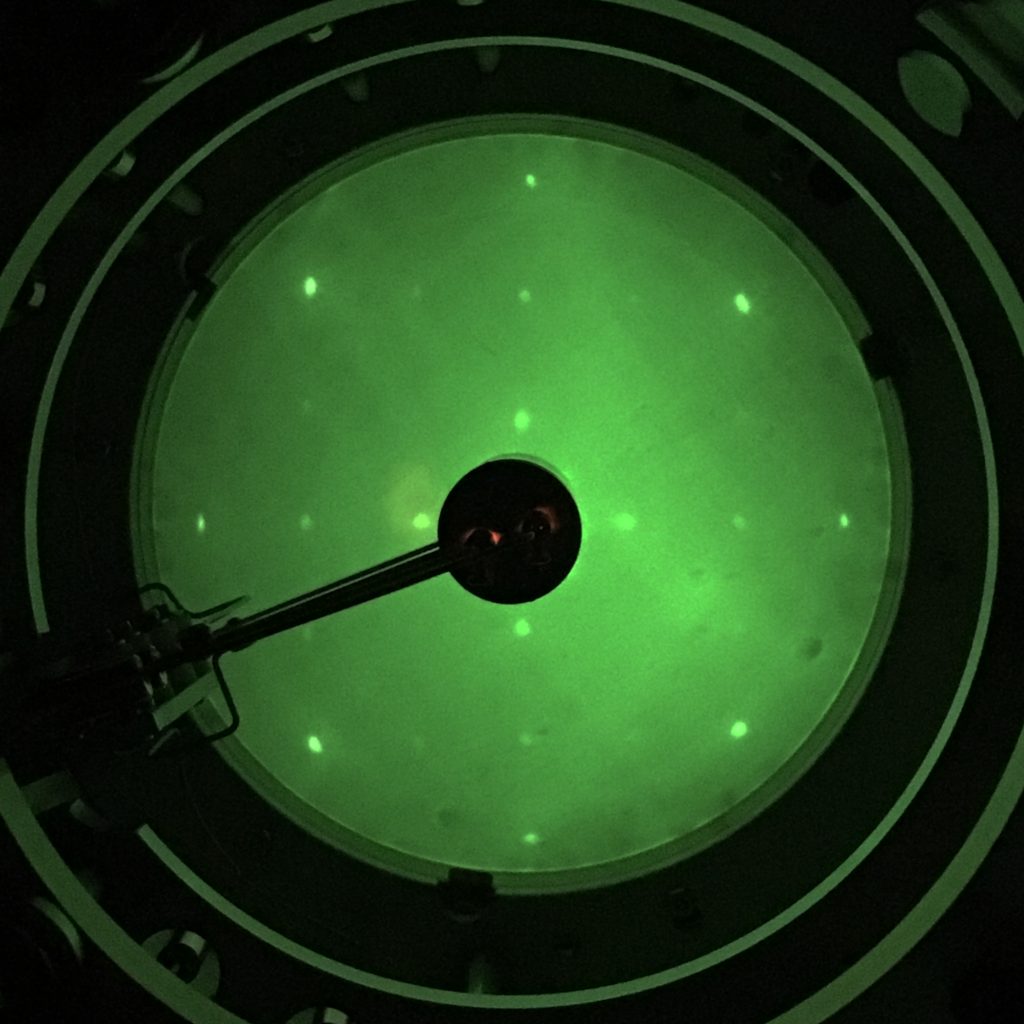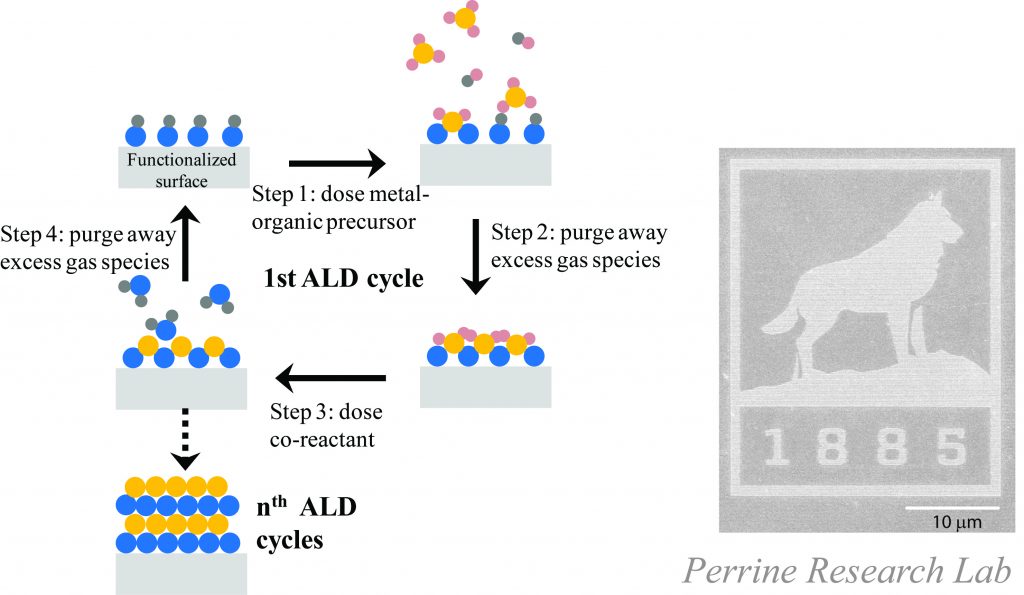Overview
Our group focuses on uncovering reactions on the surface of earth-abundant materials in complex media, from gaseous to liquid environments. We use a surface catalysis approach to investigating surface chemistry of gas/solid and liquid/solid interfaces, bridging the pressure and phase gaps. We aim to connect fundamental surface chemical reactions that are prevalent in heterogeneous catalysis to understanding complex surface reactions in environmental science.
Our current interest is measuring surface reactions on iron interfaces. Iron oxide plays a large role in heterogeneous catalytic processes and environmental reactions in the earth’s mineral cycles from soils to atmospheric particulate reactions, as well as geochemical transformations and corrosion mechanisms. The physical and chemical phenomena that drive surface chemistry at metal and oxide interfaces in the natural environment are also relevant for understanding mechanisms impacting material degradation, electrode interfaces, batteries, and catalysts.
(Click on the icons below to explore our projects!)
Projects
Overarching Objectives
1) Addressing Complexity: Connecting reactions in controlled lab conditions with realistic environments. We aim to connect what is known of catalytic reactions and apply this knowledge to measuring and understanding complex environmental processes. By measuring fundamental surface reactions, we apply learned knowledge of simplistic single crystal surfaces to complex systems.
2) Bridging the pressure and phase gap: How to understand mechanisms under controlled conditions (ultra-high vacuum) with ambient pressure conditions and reactions in the condensed phase? The variables that change in these scenarios are oxygen pressure, relative humidity, and chemical concentration. We have the capability to measure reactions at the gas/solid and liquid/solid interface to cross boundaries and measure reactions at interfaces.
3) Bridging the materials gap: How do reactions change with size and crystal structure? We design and grow metal oxide nano and meso-sized structures and compare surface reactions with pristine single crystal surfaces to address these issues.
Strategy
Our plan encompasses using model systems and bottom-up surface chemical approaches to grow well-defined surfaces and tailored metal oxide structures using molecular level controlled deposition processes. These new materials that vary in size and crystal structure will then be used as model systems to compare to reaction on well-defined crystalline surfaces to study chemical reactions at the gas/solid and liquid/solid interface.
Our strategy will connect fundamental surface chemical reactions on metal oxide materials at interfaces in complex environments that will uncover critical reactions to address energy and environmental challenges.



